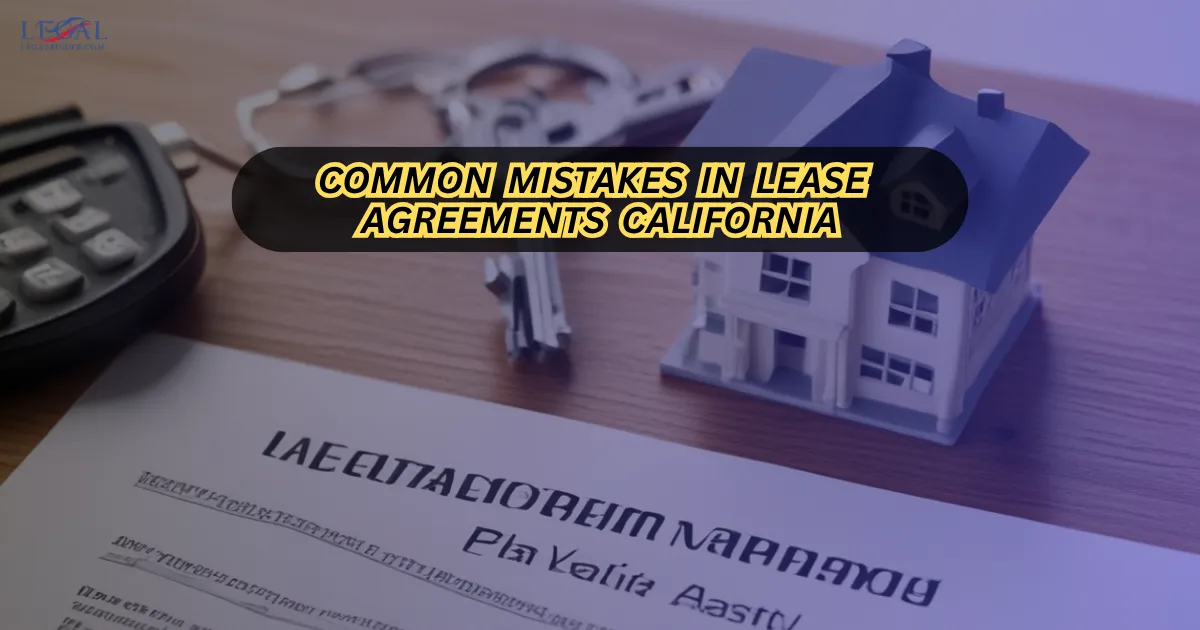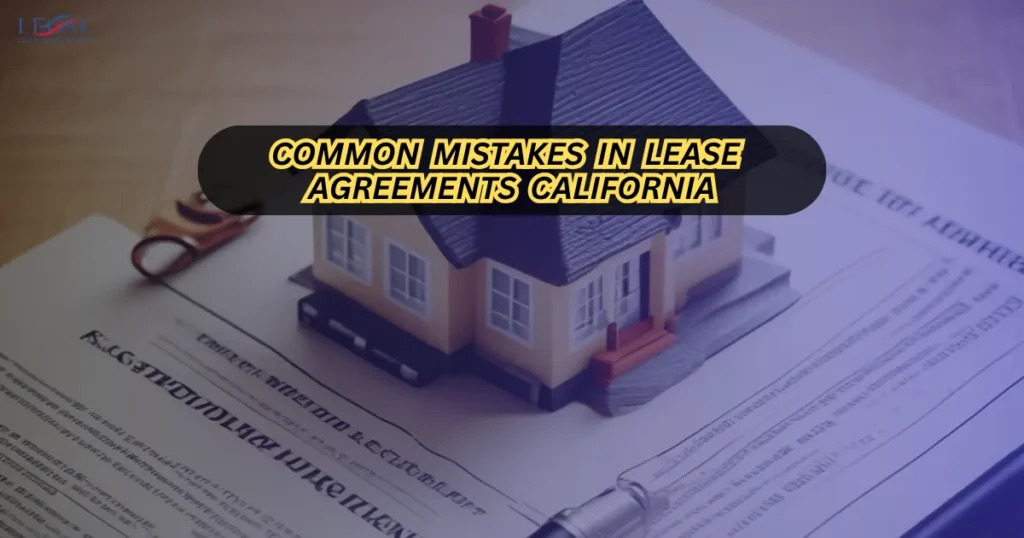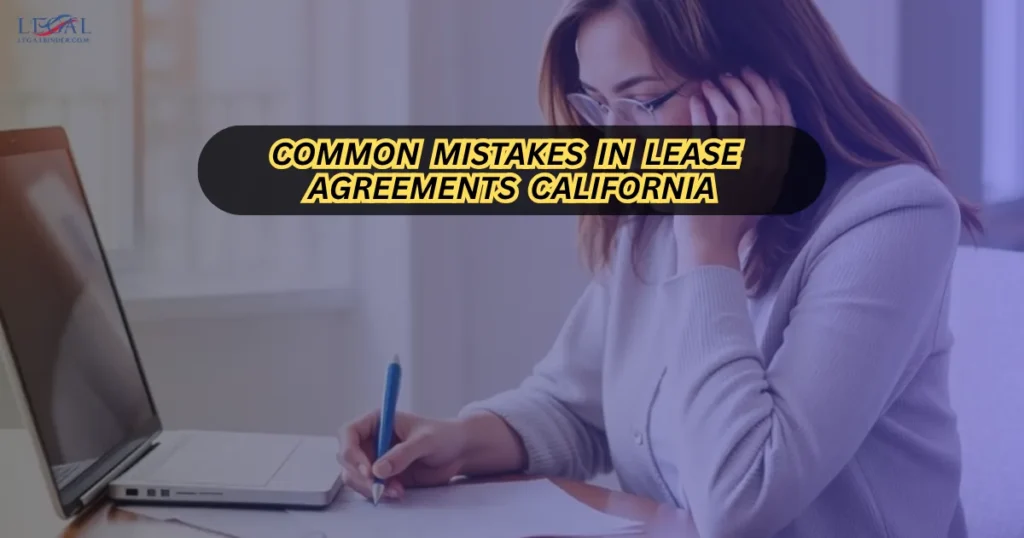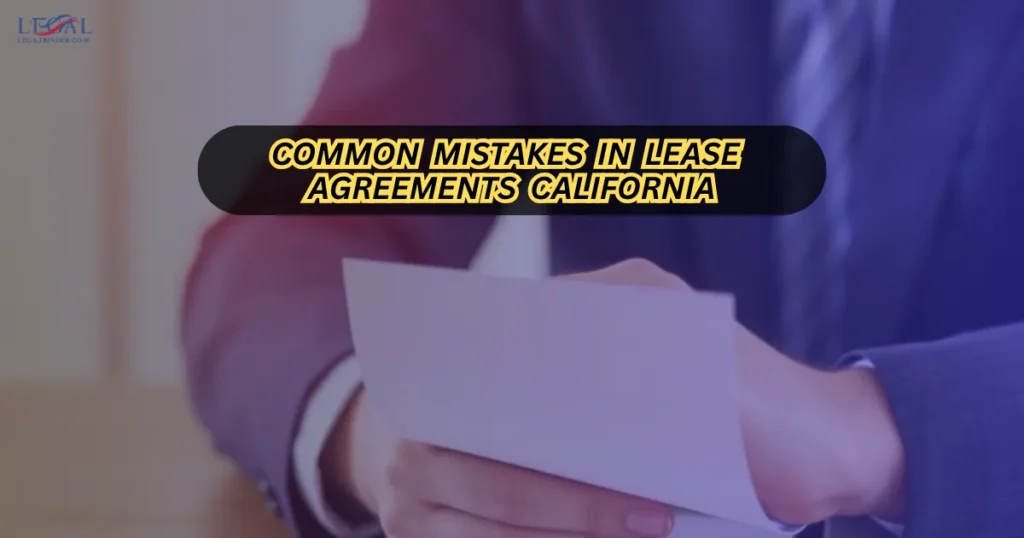Physical Address
304 North Cardinal St.
Dorchester Center, MA 02124
Physical Address
304 North Cardinal St.
Dorchester Center, MA 02124

Common mistakes in lease agreements California can cost you thousands of dollars, weeks of stress, and even your home or rental income. Whether you’re a tenant signing your first lease or a landlord drafting one, small oversights can lead to big disputes. A missing clause, unclear language, or overlooked legal requirement can turn what should be a smooth rental relationship into a courtroom battle.

Imagine this: You find your ideal apartment or perfect tenant, eager to sign quickly before someone else does. In the rush, you skip reviewing certain terms—assuming it’s all standard. Months later, you’re arguing over unmentioned repair obligations, surprise rent increases, or security deposit deductions. These battles happen every day across California, and most of them could have been prevented by understanding the most common mistakes in lease agreements before signing.
This guide dives into the top pitfalls landlords and tenants face, how California law addresses them, and practical steps you can take now to protect your interests.
For additional California rental law resources, visit our homepage.
A lease agreement in California is a legally binding contract that outlines the rights, duties, and obligations of both landlords and tenants. It must comply with state statutes, including:
Key official resources:
California law requires landlords to disclose certain information, such as:
Many landlords download generic leases that don’t comply with California’s strict requirements, risking unenforceable terms.
Failure to outline how and when rent can increase can cause disputes—especially under AB 1482 rent control protections.
Unfurnished units: 2 months’ rent cap. Furnished units: 3 months’ cap. Overcharging can bring legal penalties.
Clearly specify who handles what—from landscaping to appliance repairs.
Many California cities have rent control or additional disclosure rules. Example: Los Angeles Rent Stabilization Ordinance.
Missing or vague clauses make enforcing late fees difficult.
Without specific terms, disputes over pets and pet damage are common.
Specify whether subleasing or assignment is allowed, and conditions thereof.
End-of-lease notice requirements should be explicitly stated for both parties.
Which utilities are included? Who pays for water, gas, electricity, Internet?
California requires at least 24 hours’ notice for landlord entry (except emergencies).
This can be key in disputes—determine whether the losing party pays legal fees.
Rental laws in California change frequently—outdated leases may violate the law.
If it’s not in writing, it’s hard to enforce. Always put agreements and modifications in writing.

What’s the most Common Mistakes in Lease Agreements California?Using outdated or generic lease forms that fail to meet California’s legal requirements.Can a landlord enforce an illegal lease clause?No. Any clause violating California law is unenforceable even if both parties signed it.Who is responsible for repairs under California law?Landlords must maintain habitability; leases can specify tenant duties for minor upkeep.Can verbal lease modifications be valid?They may be valid in some cases but are extremely hard to prove—always get it in writing.
The common mistakes in lease agreements California can be avoided with careful preparation, clear communication, and legal compliance. As a tenant, you should fully understand each clause before signing. As a landlord, you must ensure your document meets legal standards and protects both parties fairly.

Taking the time to review and update your lease agreements proactively can save you from disputes, legal costs, and damaged relationships. Knowledge is your most powerful protection.
For more California lease agreement tips and resources, visit our home page.